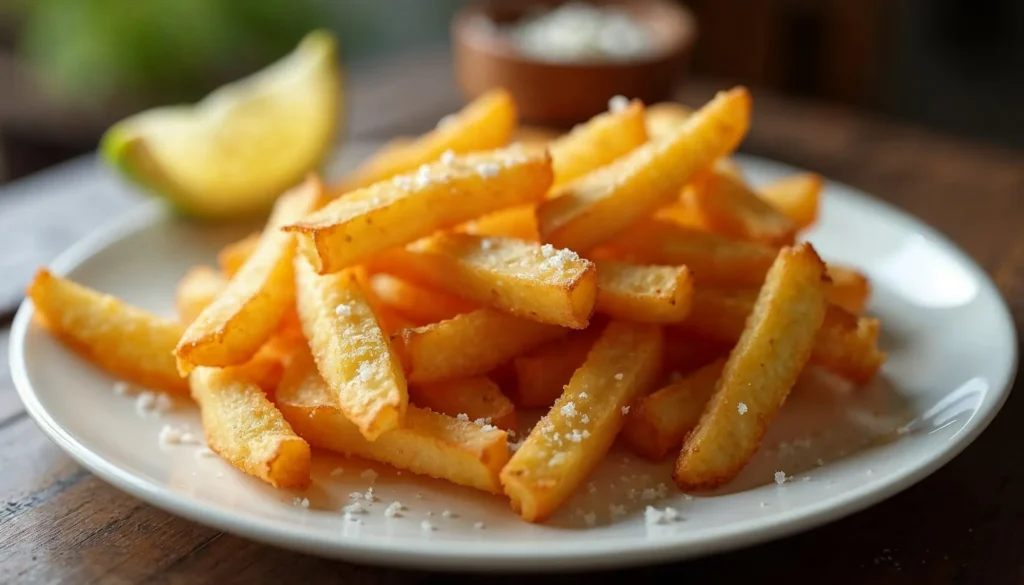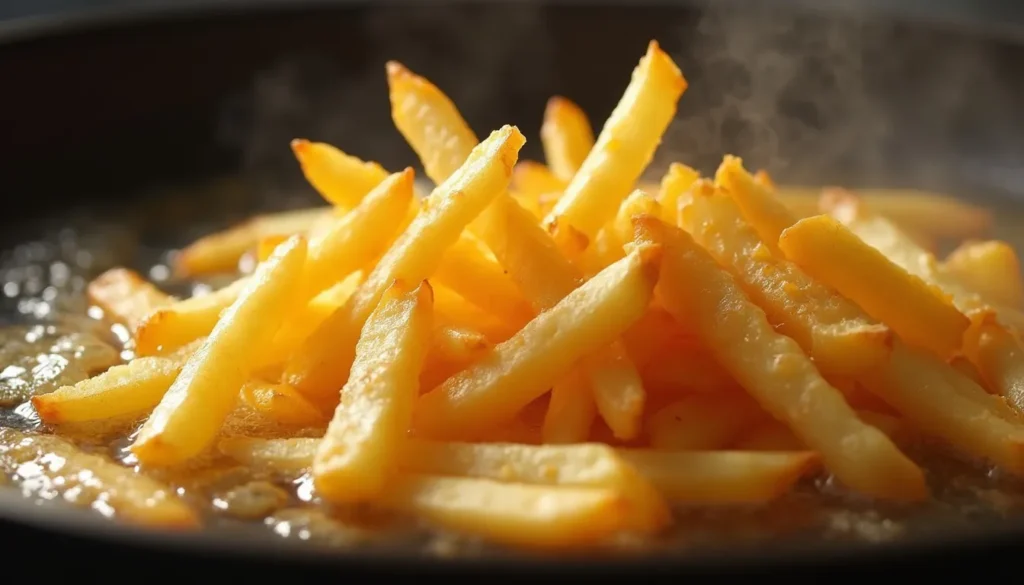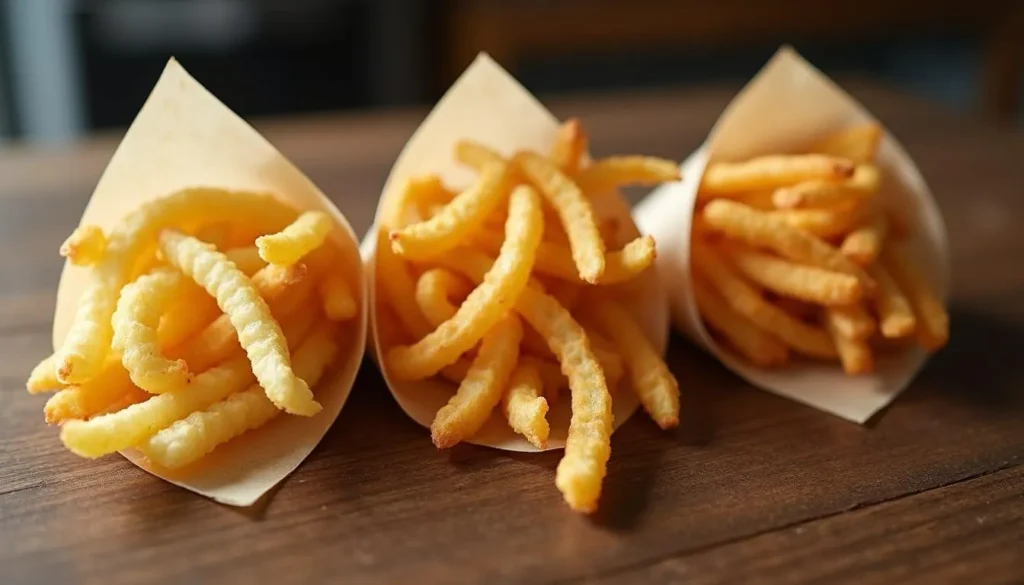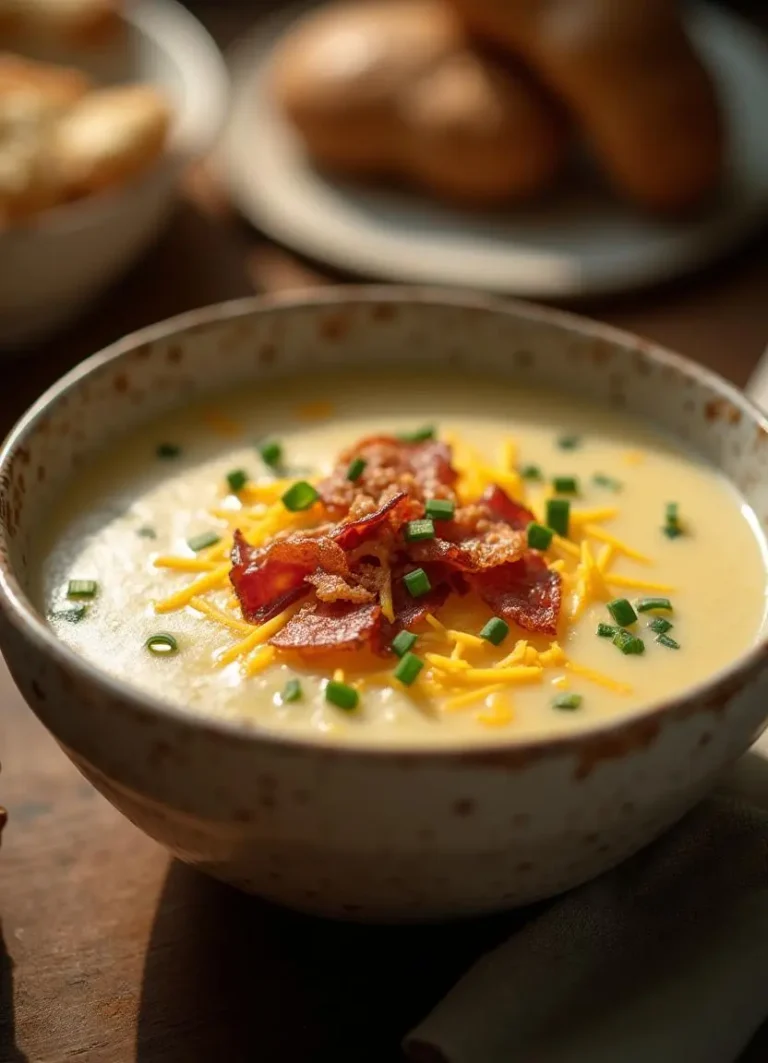Why Is It Called Papas Fritas?

If you have ever visited a Spanish-speaking country, browsed Latino-inspired menus, or stumbled upon Hispanic food advertisements, chances are you have heard the term “papas fritas.” In English, many people interpret papas fritas simply as “French fries.” Yet, you might wonder, “Why is it called papas fritas?” When we look closer, we see that there is much more to this iconic dish than meets the eye. The phrase itself reflects both the Spanish language and a rich cultural background that has influenced how many around the world enjoy fried potatoes.
This article explains where the term papas fritas comes from, how it relates to other fry varieties, and why this Spanish name remains strong in everyday culinary conversations. We will explore the evolving significance of potatoes in different cultures, how the Spanish language shaped the term papas fritas, and ways the dish has grown into a staple across Latin American countries and beyond. By the end, you will have a solid understanding of not just the name papas fritas, but the compelling story that helped bring these crispy, salty treats to dinner tables everywhere.
1. Understanding the Literal Translation
To begin demystifying the name papas fritas, let us break down the phrase from Spanish to English:
• Papas – This is the plural form of “papa,” which directly translates to “potato.” In some Spanish-speaking regions, “patatas” is also used, though “papas” is extremely common in Latin America.
• Fritas – Coming from the verb freír, or “to fry,” fritas means “fried.”
Hence, papas fritas simply translates to “fried potatoes.” If you have grown up in the United States or any English-speaking country, the phrase “French fries” is probably what you recognize. While the Spanish name is straightforward, there is still plenty to explore regarding how the dish earned such prominence and came to be known almost universally as papas fritas in many parts of the world.

2. Early History of Potatoes
Before we can uncover why it is called papas fritas, we must look at the role of potatoes (papas) in world history. Potatoes have their roots in the Andes Mountains of South America. Indigenous civilizations, including the Inca, domesticated this tuber thousands of years ago. When Spaniards arrived in the Americas, they encountered this new, nutritious food source and began transporting it back to Europe. Over time, the potato spread across the globe, embraced by many countries for its relatively easy cultivation and capacity to feed large populations.
In Spanish, the word “papa” has deep indigenous origins. Many scholars believe the term was adopted from the Quechua language, used by the Inca. Today, you find “papa” used widely throughout Latin American Spanish, forwarding a piece of the region’s cultural legacy every time someone says papas fritas. In this way, an unassuming dish—fried potatoes—carries an important nugget of history within its name.
3. The Evolution from Potatoes to Papas Fritas
While potatoes grew in popularity worldwide, the concept of frying them in hot oil came much later. Despite popular myths suggesting that French fries originated in France, many people argue Belgium as the birthplace of the modern “fry.” Historically, Belgians would fry potatoes in the 17th century when fish was not readily available during winter months. Eventually, as trade routes and culinary trends took hold, these fried potato sticks spread across Europe and found a receptive audience in Spain as well.
Soon enough, Spanish-speaking regions from Spain to Latin America started enjoying fried potato slices or sticks. The direct name papas fritas came into use naturally: “papas” for potatoes, “fritas” for fried. Over time, the dish was adapted, changed, and thoroughly integrated into local cuisines. Different countries introduced various levels of crispiness, thickness, or seasonings. Yet, the fundamental Spanish name, endowed with historical significance, remained fairly consistent wherever Spanish was spoken.
4. Papas Fritas vs. Patatas Fritas
If you are exploring Spanish cookbooks or traveling throughout Spain and Latin America, you may notice some regions say patatas whereas others prefer papas. Linguistically, both terms describe potatoes. Spain often uses patatas, so “patatas fritas” is widely recognized in Iberian cuisine. In Latin America, and much of the southwestern United States influenced by Mexican and other Hispanic communities, “papas fritas” prevails.
It all is a matter of local usage and preference. Despite minor differences in spelling and dialect, the meaning remains identical: fried potatoes. And in today’s global world, both phrases enjoy popularity and recognition, confirming the dish’s universal appeal.
5. Culinary Significance in Spanish-Speaking Cultures
While papas fritas carry universal appeal, they hold a particularly special place in Hispanic culinary traditions. As a side dish, they often accompany burgers, sandwiches, or grilled meats. In some countries, papas fritas are essential in fast-food chains and local street stalls alike. Soccer matches, family gatherings, or casual get-togethers might feature large piles of crisp papas fritas with dips or sauces that vary from region to region.
In Peru, for example, you might find papas fritas alongside lomo saltado—a stir-fry style dish mixing beef, peppers, onions, and soy sauce. In Chile, papas fritas frequently partner with a classic steak or marraqueta bread sandwich. In Mexico, they may join tacos or be served with spicy sauces. The unifying element is that it all starts with the same concept: “fried potatoes,” or papas fritas.
6. Cultural Variations of Papas Fritas
In many Latin American countries, you will see papas fritas prepared differently. Some cooks prefer thicker wedges, similar to steak fries, while others produce slender shoestring fries. The thickness can also determine how crispy the fries become. Additionally, specific cuts can reveal cultural influences:
• Wedges: Often found in fast-casual restaurants across the U.S. and Latin America. They go well with barbecue sauce or tangy dips.
• Shoestring: These thin fries might come extra crispy, sometimes garnished with various spices like paprika or cayenne.
• Gourmet Varieties: Many upscale eateries have taken papas fritas to a luxurious level, adding truffle oil, fresh herbs, or artisan cheeses.
Regardless of the cut, texture, or seasoning, the core identity remains intact: papas fritas are undeniably mouthwatering fried potato slices or sticks that appeal to a wide range of palates.
7. How the Name Spread Across Borders
From Spain’s patatas fritas to Latin America’s widespread papas fritas, the name for these fried potatoes reflected local languages and preferences. And as Spanish-speaking populations flourished abroad, they brought their cultural dishes with them. In the United States, regions like Texas, California, Florida, and New York boast large Hispanic communities, all of which have helped promote terms like papas fritas.
Eventually, major retailers, fast-food chains, and restaurants catering to bilingual or Spanish-speaking customers recognized the marketing appeal of “papas fritas.” You might notice bilingual menus listing both “French fries” and “papas fritas,” acknowledging a demand for inclusive language. In essence, the name traveled thanks to cultural assimilation, culinary curiosity, and a love for crispy potatoes.
8. Global Impact of Fried Potatoes
When you think of very popular foods, you might picture pizza, hamburgers, or sushi. Fried potatoes, however, belong on that same list of globally cherished dishes. The exact name might differ—chips in the UK, frites in France and Belgium, fries in the U.S., patatas fritas in Spain, papas fritas in Latin America—but the concept is the same. It is this worldwide familiarity that has made papas fritas a unifying dish, welcomed in countless settings from casual barbecues to formal dinners.
Understanding that the Spanish name highlights the food’s heritage is pivotal to answering “Why is it called papas fritas?” Some Spanish-speaking communities have retained the same name for centuries. The phrase itself is a cultural hallmark and a culinary mainstay dating back to the early days of potato adoption in Spanish cuisine.

9. Connection to Everyday Mealtimes
One of the reasons papas fritas are so beloved is that they integrate seamlessly into everyday family meals. Even at home, families often whip up homemade papas fritas in a variety of ways. Perhaps they simply cut the potatoes, fry them in vegetable oil, and sprinkle salt, or they experiment with battered fries, garlic, onions, or chili peppers to create new signature flavors. Many families pass down these techniques and recipes, forging continuity in how papas fritas are prepared from generation to generation.
If you are curious about a straightforward process for making these crispy bites at home, you can explore a detailed guide on preparing them in creative ways. A great place to start is this helpful resource on How to Make Papas Fritas. It outlines essential tips like selecting the right potatoes, soaking them to remove excess starch, and figuring out the ideal oil temperatures.
10. Varied Pronunciations and Regional Emphasis
In Spanish-speaking countries, the phrase papas fritas can have subtle pronunciation differences. For instance, Argentines may say it with a distinct accent compared to Mexicans, Colombians, or Spaniards. Yet, no matter the accent, the meaning remains the same.
The uniformity of the dish name demonstrates the shared appreciation for a humble, yet irresistible food. While other staple foods might demand specific local terms, fried potatoes so often keep that same formula: papas for potatoes, fritas for fried. Events such as football parties, birthdays, local fiestas, or even holiday dinners can feature these crispy potato sticks as a comforting, crowd-pleasing side.
11. Papas Fritas in Modern Pop Culture
Beyond a simple menu item, papas fritas have taken on a pop-cultural life of their own. Advertising campaigns across Latin America show families enjoying papas fritas at home or in fast-food restaurants. Some commercials tie emotional moments—kids returning from school, sports victories—to the joyful presence of a hot plate of fries. The dish symbolizes familiarity, care, and indulgence.
In social media and pop culture references, you might see memes or comedic sketches built around the universal love for papas fritas. From popular TV shows to references in songs, these fried potatoes are often considered the best sidekick to everything from burgers to artisanal dips. Language is also at play, with bilingual punsters occasionally merging Spanish and English references, placing papas fritas front and center in everyday humor.
12. Health Perspectives and Eating in Moderation
When we ask, “Why is it called papas fritas?” another angle emerges concerning health. Potatoes contain valuable nutrients such as vitamin C and potassium, but once fried, the calorie and fat content can rise significantly. Consequently, enjoying papas fritas in moderation is recommended by most nutrition experts. Adding too much salt or consuming gigantic portions might overshadow the health benefits that potatoes originally offered.
However, choosing healthier oils, controlling portion sizes, and balancing your overall diet can let you savor papas fritas without harming your nutrition goals. For instance, pairing your fries with fresh vegetables, lean proteins, or even a balanced soup can be a great approach. If you are curious about more health-conscious choices, looking at fruit options can help. You might be interested in exploring Which Berry Is Lowest In Carbs to incorporate more nutritious sides or desserts into your meal plan.
13. The Spanish Language Influence in the U.S.
One cannot discuss “Why is it called papas fritas?” without acknowledging how Spanish has become deeply integrated in U.S. culture. Immigration patterns, bilingual education, and the significance of Hispanic communities have all led to Spanish-language influences in grocery stores, restaurants, and family gatherings. It is not surprising to see menu items labeled both “French fries” and “Papas Fritas” in many eateries across the country.
The phrase can evoke nostalgic ties for Spanish-speaking Americans who grew up using the phrase at home. Meanwhile, English speakers see a chance to learn a bit more of the language. This blending of languages fosters multi-cultural appreciation, ensuring that something as simple as papas fritas continues to integrate two cultures into one communal experience.
14. Serving Suggestions and Flavor Combos
Papas fritas are so flexible you can pair them with a wide array of dishes. Whether you spice them up with Cajun seasoning, drizzle them with melted cheese, or serve them alongside a hearty soup, papas fritas rarely disappoint. Some suggestions for pairing include:
- Hearty Meat Dishes: Grilled steak, rotisserie chicken, or roasted pork can all benefit from a crispy potato complement.
- Soups and Stews: Dipping fries into a rich stew can be pure comfort on a cold day. For instance, a zesty dish like chipotle soup can make an interesting contrast—take a look at this Chipotle Ground Beef Soup with Rice for robust flavors that marry well with crisp fries.
- Salad Pairings: A crisp side salad or coleslaw adds a fresh note to the indulgent, fried texture of papas fritas.
- Global Fusion: Toppings such as kimchi, curry sauces, truffle oil, or shredded seaweed highlight the global craze for loaded fries.
15. Papas Fritas vs. French Fries in the U.S.
Although many might say papas fritas and French fries are the same, there can be subtle differences based on region and cooking preferences. Typical French fries in the U.S. might come thin-cut and heavily salted, while some Latin American versions maintain a thicker cut, allowing for a fluffier interior. Additionally, seasoning differences often reflect local spice palettes—lime, chili, or garlic salt in Latin American countries vs. black pepper or cheese in certain U.S. diners.
Understanding these variations can make your food experiences richer. You can ask for papas fritas in a local Salvadoran or Mexican restaurant and get something that might taste distinctly different from fries at a typical American fast food joint. Even so, the underlying appeal remains consistent: a satisfying crispy outside with a warm, soft middle.
16. Homemade Preparations for Papas Fritas
If you are feeling inspired, you might want to try making papas fritas at home. This can give you control over thickness, crispiness level, and seasoning. Generally, you slice the potatoes, soak them in cold water, blot them dry, then select whether to fry them once or twice. A double-fry method often yields extra-crispy results. Some people also prefer baking them in the oven for less oil usage, but that approach may alter the signature flavor slightly.
Home cooks can toss in seasonings such as paprika, rosemary, or even a homemade spice blend. Pairing your freshly made papas fritas with a protein is also a wonderful idea–maybe topping them off with cheese sauce or gravy to transform them into a main dish. Another creative idea is serving them with an Italian-American classic. You might explore this Alfredo and Meatballs Recipe for a fusion dinner, pairing creamy pasta with your crispy fries for a unique flavor contrast.
17. Importance of Language Identity
The compelling question “Why is it called papas fritas?” also opens the door to deeper reflections on language identity. Even though “French fries” is popular in English, Spanish speakers hold onto the name papas fritas as a sign of cultural identity. Words have power; they carry heritage, stories, and culinary traditions. As Spanish remains one of the most spoken languages in the U.S. and the second most spoken language worldwide, frequently used terms like papas fritas help keep that linguistic tradition alive.
Language is more than just words. It is a vessel for preserving experiences that pass from one generation to the next. Each time you hear papas fritas, there is a nod to the history of potatoes in the Andean regions, the Spanish conquest, the cultural melting pot of Latin America, and the diaspora that extends into the United States. It is a testament to how a single dish can intertwine with the complexities of cultural assimilation and pride.
18. Signature Sauces and Seasonings
Beyond calling them papas fritas, many Latin American countries have developed their own unique sauces and seasonings tailored to fried potatoes. In some areas, a simple drizzle of hot sauce might be enough. Others create elaborate blends of lime, chili powder, or other local spices. Argentinian chimichurri sauce or Costa Rican salsa Lizano can also appear as interesting dips for papas fritas.
Many fans even prefer mayonnaise or aioli instead of the typical ketchup. Meanwhile, in countries like Peru, aji amarillo (yellow chili pepper) sauce provides a spicy and exotic pairing that can’t be replicated with standard condiments. Over time, these local variations expand the variety of how papas fritas can be savored, all while preserving the core identity indicated by the dish’s Spanish name.
19. Serving Papas Fritas on Special Occasions
Though papas fritas are usually perceived as a casual snack or everyday side dish, they can also appear during bigger festivities. At birthday parties or holiday gatherings, large trays of fries might be offered to guests as a quick, tasty accompaniment to more elaborate dishes. The simplicity of papas fritas matches well with the chaotic energy of big celebrations: they’re easy to hold, enjoy, and share. Plus, their universal appeal makes them safe crowd-pleasers.
In fact, outdoor grills or backyard barbecues might set up a station to deep-fry potatoes on the spot, ensuring that warm, fresh papas fritas keep flowing. The name itself — papas fritas — might resound as excited children (and grown-ups) ask for more servings. It’s a tradition that merges fun, family, and flavor all into one plate.
20. Conclusion: Embracing the Spanish Name
So, why is it called papas fritas? Because the Spanish phrase is a clear embodiment of what they are—fried potatoes—reflecting the deep cultural and linguistic roots from the Andes to Spain, and eventually branching out across the world. Although many English speakers are used to saying “French fries,” the Spanish term highlights a tradition that predates many modern fast-food interpretations. It ties to the indigenous usage of papa, the Spanish language’s integration, and the dish’s subsequent migration across continents.
In short, papas fritas is more than just a label. It is a piece of living culinary history that merges indigenous heritage, Spanish colonization, and modern appetites. Whether you enjoy them in a high-end restaurant or whip them up at home for a family meal, each crispy bite testifies to centuries of cultural exchange. The next time you see papas fritas on a menu, you’ll recognize more than just a plate of fries—you’ll acknowledge a term shaped by language, regional adaptation, and timeless popularity.
Food can be a window into historical narratives and shared experiences. Papas fritas exemplify this connection between language, heritage, and modern dining trends. So the question “Why is it called papas fritas?” leads us to a deeper appreciation of globalized gastronomy. And if you decide to make a batch yourself or savor them at your favorite Latin American restaurant, you now have the full story behind the name on your plate. Enjoy!







One Comment